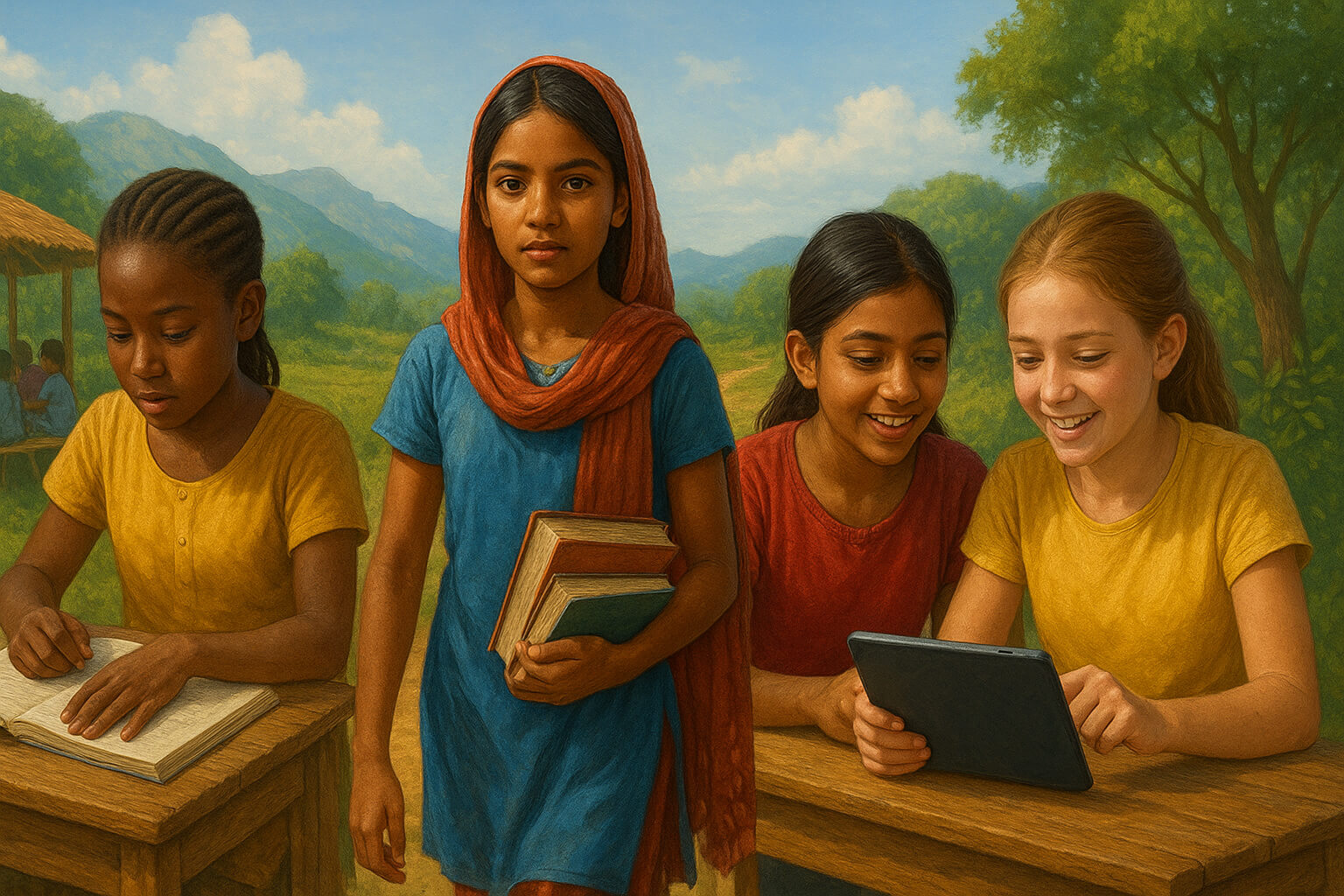Education is undeniably one of the most powerful tools for social and economic empowerment, yet millions of girls around the world face significant barriers that prevent them from accessing quality schooling. While progress has been made, challenges remain in areas such as cultural norms, poverty, infrastructure, and gender discrimination. By understanding these obstacles and focusing on evidence-backed solutions, we can create a more equitable future for girls everywhere.
Why Girls' Education Matters
When girls receive a quality education, the benefits are far-reaching. Not only do they experience higher lifetime earnings, improved health outcomes, and delayed marriage and childbirth, but they also contribute to stronger civic participation. According to UNICEF, every additional year of schooling improves a girl’s prospects significantly (UNICEF Girls' Education Resources).
The benefits extend to the wider community, as educated women often reinvest in their families, leading to better outcomes for future generations. A strong foundation in early childhood education is particularly impactful, as it sets the stage for future learning and lifelong success. For more on this, check out The Importance of Early Childhood Education.
The Key Barriers Girls Face
- Poverty and Direct Costs
- School fees, uniforms, transportation, and learning materials often push families to prioritize immediate survival over education. Cash transfer programs and school meal initiatives can alleviate some of these financial barriers and prevent girls from dropping out.
- Cultural Norms and Early Marriage
- In certain regions, traditional gender roles and early marriage practices deprioritize girls’ education, leading them to household duties or early motherhood. Shifting societal attitudes and engaging communities in education campaigns can help challenge these norms.
- Safety and Infrastructure
- Long journeys to school, unsafe travel routes, and inadequate sanitation facilities discourage families from sending their daughters to school. Investments in secure transportation, gender-sensitive infrastructure, and safe school environments can make a significant difference.
- Learning Differences and Insufficient Support
- Girls with disabilities or special needs are often excluded from traditional schooling systems. Inclusive education models, which provide support systems and adaptable teaching practices, are essential to ensure every girl has the opportunity to succeed. For resources on creating inclusive learning environments, see Understanding Learning Disabilities and Support Systems.
- Transition Gaps
- While some girls complete primary school, many face challenges in transitioning to secondary education due to costs, distance, or a lack of appropriate programs. Preparing students and their families for this transition is crucial. For more insights, refer to Preparing Students for College: A Guide for Parents.
What Works — Evidence-Backed Solutions
Several solutions have proven effective in addressing the barriers girls face in education:
- Investing in Early Years: Early childhood education lays the groundwork for future learning, ensuring that girls develop the cognitive and social skills they need to thrive. You can read more about this in The Importance of Early Childhood Education.
- Mentorship & Role Models: Programs that pair girls with mentors have shown increased attendance and improved performance. These role models inspire confidence and provide guidance. Learn about mentoring strategies in Mentorship Matters: Guiding Young Minds to Success.
- After-School Support and Reading Programs: Tutoring and extracurricular activities, including reading clubs, increase engagement and close learning gaps. Programs that encourage a love of reading, like Encouraging a Love of Reading in Children, are particularly effective.
- Vocational Pathways: Offering girls vocational training provides immediate employment opportunities, keeping them engaged in education systems and offering a direct path to sustainable livelihoods. For more on vocational training, see Empowering Youth Through Vocational Training.
- STEM Access & Opportunities: Encouraging girls to pursue education in science, technology, engineering, and math (STEM) expands career possibilities and helps break gender stereotypes. For more, check out STEM Education: Preparing Youth for the Future.
- Policy & Social Protection: Legal protections, free school meals, cash transfers, and subsidies for safe transportation are essential to keeping girls in school. The effectiveness of these programs can be seen in The Role of Social Safety Nets in Poverty Alleviation.
How Communities and NGOs Amplify Impact
- Local organizations and schools can amplify their efforts by combining nutrition, health, and educational support. School meal programs linked to smallholder farmers and community gardens not only feed children but also strengthen local economies and support climate resilience. For related reading, explore Water Scarcity: A Growing Global Crisis & Sustainable Agriculture.
- Global partnerships, such as the Malala Fund, UNESCO, and the Global Partnership for Education, provide models for effective programs and advocacy. These organizations offer valuable funding and guidance for scaling successful initiatives (Malala Fund, Global Partnership for Education, UNESCO).
Practical Steps for Individuals and Organizations
- Support Scholarships and Local Mentorship Programs: Even small donations or volunteer time can make a big difference.
- Advocate for Gender-Sensitive Budgets and Laws: Push local governments to invest in infrastructure, safety, and educational access for girls.
- Promote Inclusive Classrooms: Ensure that teachers are trained in gender-sensitive pedagogy and that learning materials reflect diverse cultural contexts.
- Support Community-Based Solutions: Programs that connect education with livelihood opportunities—such as vocational training—help keep girls in school longer.
- Raise Awareness and Challenge Norms: Organize community dialogues, parent groups, and media campaigns to challenge gender norms and reduce stigma around girls' education.
Measuring Success and Staying Accountable
To measure the success of these initiatives, track indicators such as enrollment and completion rates, learning outcomes, transition rates to secondary education, and reductions in child marriage. International organizations like the World Bank and UNESCO offer data and best practices for monitoring progress (World Bank Education Overview, UNESCO Institute for Statistics).
Conclusion
Breaking down the barriers to education for girls requires a comprehensive approach, incorporating early investments in learning, safe and inclusive environments, mentorship, vocational training, and robust policy frameworks. By combining evidence-based strategies, such as after-school tutoring, vocational pathways, and social protection programs, we can unlock the full potential of girls, benefiting entire societies. Every action—from supporting scholarships to advocating for better policies—brings us closer to a future where every girl can learn, lead, and thrive.
